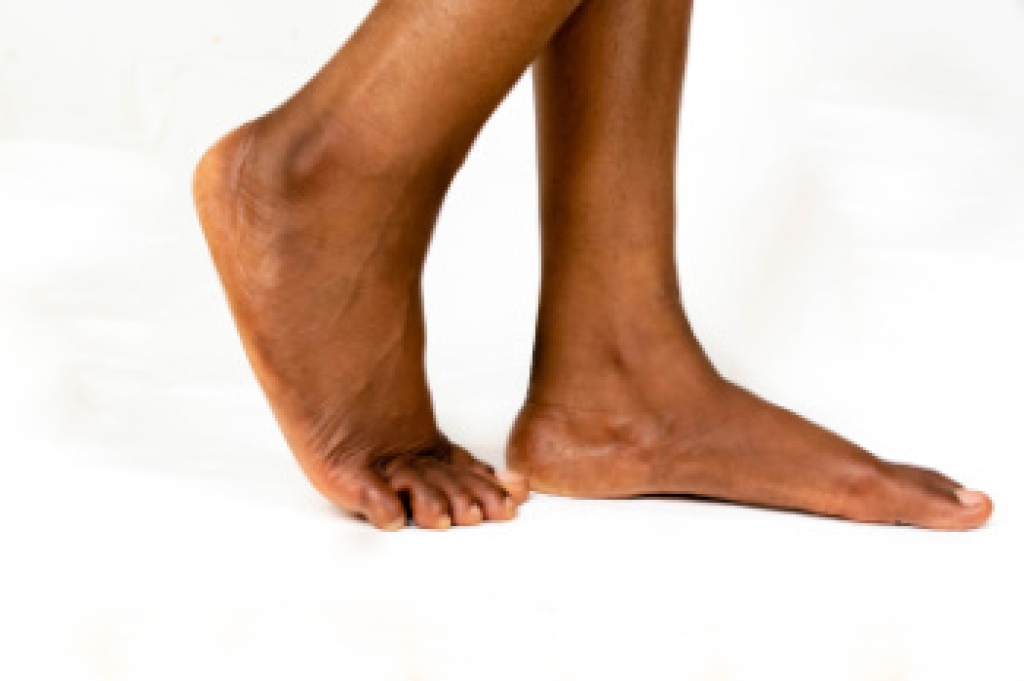
Flat feet, or fallen arches, occur when the entire sole is nearly or completely in contact with the ground when you stand, resulting in little to no arch. The two main types of flat feet are flexible and rigid. In flexible flatfoot, the arch is visible while not bearing weight but disappears when standing. It often appears in childhood and may not cause problems. In contrast, rigid flatfoot, or adult-acquired flatfoot, involves a persistent lack of arch due to posterior tibial tendon dysfunction. Symptoms include pain and swelling, eventually leading to arthritis if untreated. Causes of flat feet range from congenital factors to obesity and diabetes. Symptoms can include foot pain, fatigue, and misaligned gait. A chiropodist can diagnose flat feet through a physical exam and imaging tests before offering such treatments as custom orthotics. If you have foot pain related to flat feet, it is suggested that you schedule an appointment with a chiropodist for an exam and treatment options.
Flat feet are a common foot condition. If you are experiencing pain or discomfort due to flat feet, please consult with Emily Yu, B.Sc from Uptown Foot Care Clinic. Our specialist will assess your condition and provide you with quality foot and ankle treatment.
What Are Flat Feet?
Flat feet are feet that do not have a well-defined arch in the middle of the sole of the foot. Flat feet may be flexible or rigid. Flexible flat feet have an arch when there is no pressure put on the foot, such as when one is sitting, but the arch disappears upon standing. Rigid flat feet lack an arch regardless of whether one is standing or not.
Causes
Flat feet can be present from birth or acquired over time due to a weakening of the ligaments in the arch. Sometimes flat feet are caused by illnesses, injuries, or pregnancy.
Symptoms
Flat feet often cause no noticeable symptoms. However, some people may experience pain and discomfort due to their flat feet.
Symptoms associated with flat feet include:
- Pain in the arch, heel, ankle, or along the outside of the foot
- Overpronation of the foot
- Shin splints
- Aching or fatigue in the feet or legs
- Pain in the knees, hips, or lower back
Treatment
In cases where flat feet cause symptoms, there are various treatments available. Wearing orthotic inserts in your shoes to provide more arch support, performing stretches, and taking medications may improve your symptoms. If you are overweight, losing weight can help relieve pressure on the feet. In severe cases, surgery may be considered.
If you have any questions, please feel free to contact our office located in . We offer the newest diagnostic and treatment technologies for all your foot care needs.
